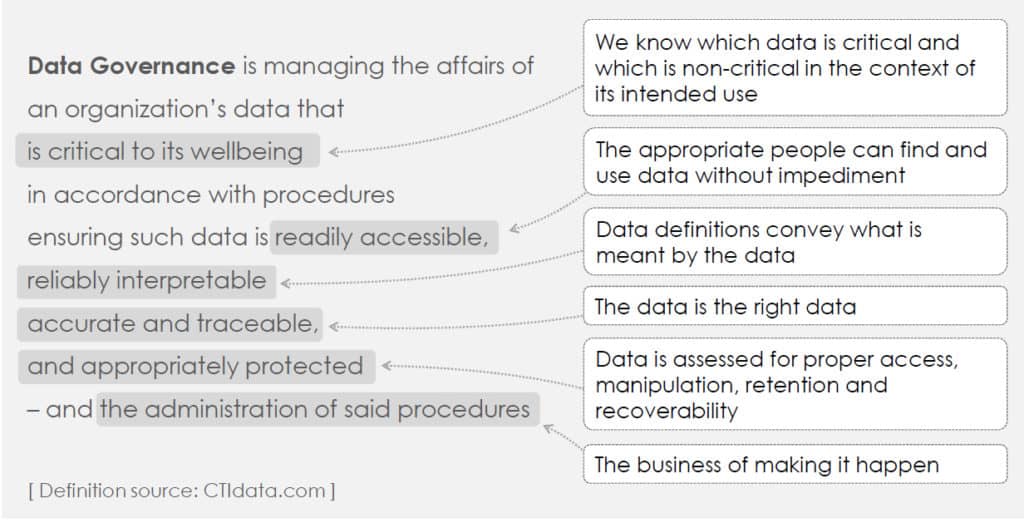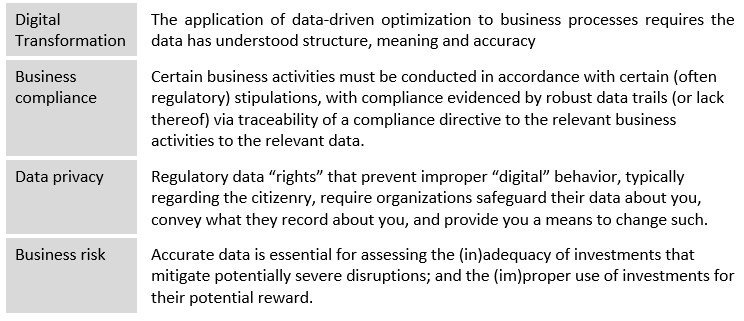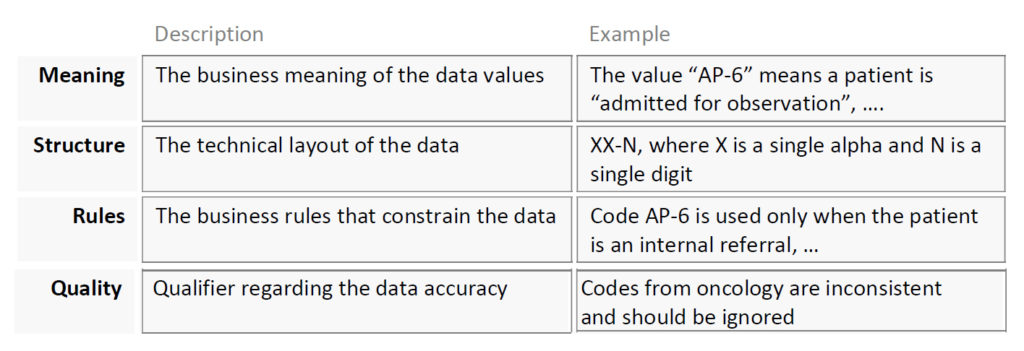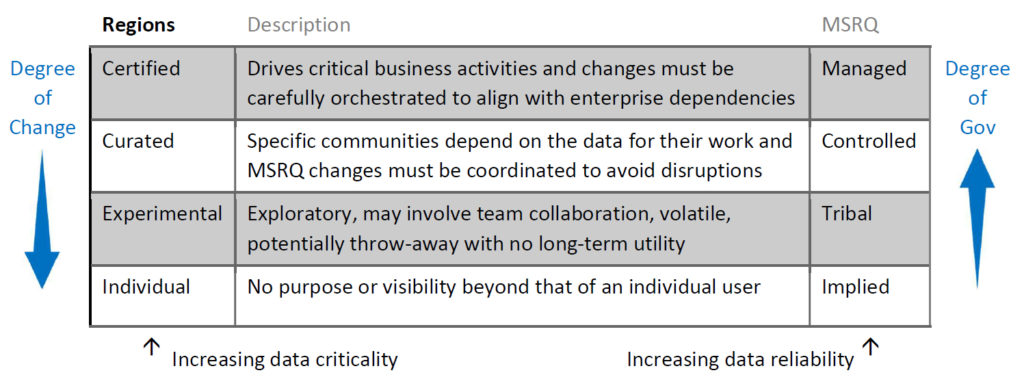Ask a group of people to define “data governance” and you’ll get various responses. Ironically, the term itself suffers from ambiguity, so here is how we define it:


Digital transformation initiatives are a key driver for needing such data clarity, but there are others that we should keep in mind listed briefly here:

One obvious and critically important aspect is that not all data needs to be equally governed; rather it is governed commensurate with its use. Therefore, we start by stratifying our data landscape. All data exists somewhere on this continuum:

Data towards the left has evolving and varied interpretations and therefore not dependable for important business work. Data towards the right has a more stable interpretation and, therefore, more appropriate for important business work.
Keep in mind that “interpretation” is the understanding conveyed by the values in the data (its codes, its numbers, its labels). If the interpretation is evolving, we do not have a consistent understanding across people. For some, data that may be ok; it all depends on the intended purpose.
We can codify this notion of data interpretation as the meaning, structure, rules and quality (MSRQ) of the data; an aspect of business metadata (data that describes data) defined as:

On the left of the continuum, we have dynamic and evolving MSRQ, and on the right, we necessarily have stable MSRQ. Keep in mind that it’s the uncertainty and variability in the MSRQ that moves us along the continuum; no law says data must progress as such: some data may never be more than an experiment.
We now demarcate the continuum into four regions as follows:

Many organizations are behind when assessed on this scale. Their Certified data, for example, their core record-keeping systems, may be ok (but even here there are often quality issues); but their Curated data, for example, their departmental databases and spreadsheets that are used to “get things done”, are haphazardly governed, if at all.
Many organizations are behind when assessed on this scale. Their Certified data, for example, their core record-keeping systems, may be ok (but even here there are often quality issues); but their Curated data, for example, their departmental databases and spreadsheets that are used to “get things done,” are haphazardly governed, if at all.
The root of the problem is due to Governance programs not being set up the right way (if they exist). By applying the data stratification methods described here, with the agile governance notion we introduced earlier, we start to solve the problem little by little. The question then is how you start – please feel free to connect with us for more about that.
Kurt Rosenfeld is Chief Technology Officer at CTI.